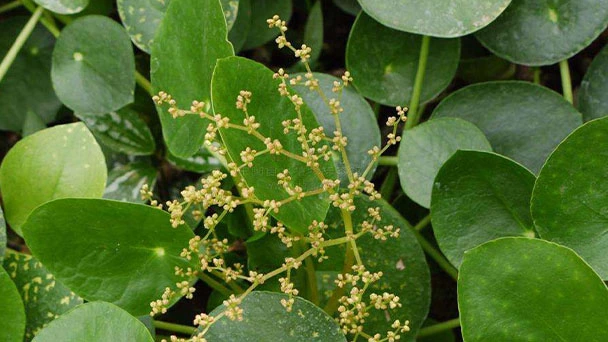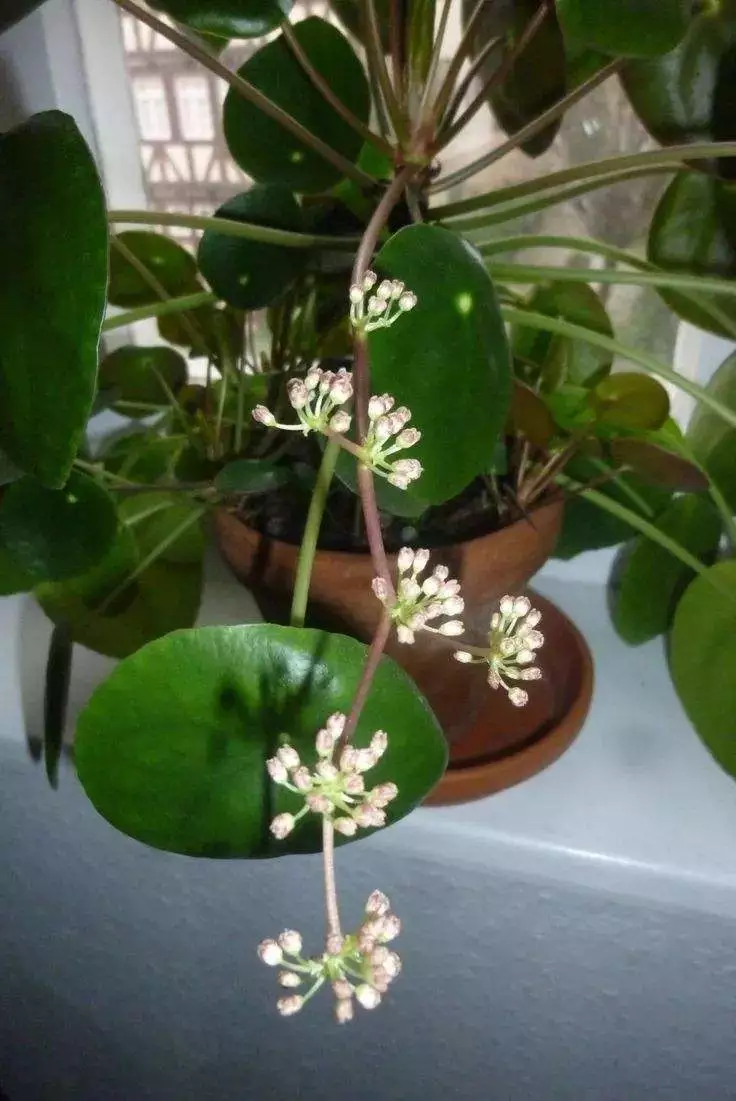When Do Pilea Peperomioides Bloom Flower?
Written by Ivy
Dec 29 2021

Pilea peperomioides can bloom. Many flower friends have planted Pilea peperomioides, but not everyone who has planted Pilea peperomioides has seen this plant bloom. Because the flowering of Pilea peperomioides is rare, it usually takes more than three years to bloom. In the process of maintenance, it is necessary to maintain correct methods and enough patience.
 When Pilea peperomioides blooms, the pedicel is pulled out near the top of the stem. The inflorescence of the meat spike is relatively strong, curved and growing, with a length of about 10 cm. The inflorescence is multi branched, and the flowers are covered with branches. The flower color is light yellow, as if the branches were dotted with small grains of rice, which has a unique flavor. Pilea peperomioides blooms without special fragrance. It is generally matched with green leaves, which is very beautiful.
When Pilea peperomioides blooms, the pedicel is pulled out near the top of the stem. The inflorescence of the meat spike is relatively strong, curved and growing, with a length of about 10 cm. The inflorescence is multi branched, and the flowers are covered with branches. The flower color is light yellow, as if the branches were dotted with small grains of rice, which has a unique flavor. Pilea peperomioides blooms without special fragrance. It is generally matched with green leaves, which is very beautiful.
Read More:
What Is The Best Soil For Pilea Peperomioides?
Read More:
How To Water My Pilea Peperomioides?
In addition to water and sunlight, Pilea peonomioides also needs nutrients and appropriate temperature. Throughout the spring and summer, the growth period of Pilea Peperomioides is strong. We should strengthen the management of fertilizer and water, and often use 0.1% - 0.5% potassium dihydrogen phosphate solution to irrigate or spray foliage. Pilea peperomioides likes warmth. When it is lower than - 4 ℃, it will suffer from chilling injury, and the leaf color will lose luster or even fall off. If you can't keep up with the nutrients and the temperature is too low, let alone the green and bright Pilea peonomioides, it's the greatest gift of heaven not to raise it to death.
Why Do Pilea Peperomioides Bloom?What Do Pilea Peperomioides Blooms Look Like? Should I Remove the Flower?Can I Force My Pilea Peperomioides to Bloom?
Why Do Pilea Peperomioides Bloom?
The flowering period of Pilea peperomioides is generally in spring and summer every year. As long as it is properly maintained and meets the flowering conditions, it can bloom from April to July. The flowering period of Pilea peperomioides is not long and generally opens for about half a month.What Do Pilea Peperomioides Blooms Look Like?

Should I Remove the Flower?
Pilea peperomioides blooms, cut or not. Its flowers are relatively small and ornamental. If you don't want to keep seeds, you'd better cut off the flowers, which can reduce nutrient consumption and promote it to recover as soon as possible. If you want to keep seeds, you can keep flowers. It is recommended to apply appropriate amount of fertilizer before flowering to ensure sufficient nutrients, so that Pilea peperomioides will bloom better, bear seeds better, and recover as soon as possible after flowering.Can I Force My Pilea Peperomioides to Bloom?
To make Pilea peperomioides blossom smoothly, we need to master the correct maintenance methods and maintain it according to its growth habits:- Temperature
- Soil
Read More:
What Is The Best Soil For Pilea Peperomioides?
- Watering
Read More:
How To Water My Pilea Peperomioides?
- Fertilizer
In addition to water and sunlight, Pilea peonomioides also needs nutrients and appropriate temperature. Throughout the spring and summer, the growth period of Pilea Peperomioides is strong. We should strengthen the management of fertilizer and water, and often use 0.1% - 0.5% potassium dihydrogen phosphate solution to irrigate or spray foliage. Pilea peperomioides likes warmth. When it is lower than - 4 ℃, it will suffer from chilling injury, and the leaf color will lose luster or even fall off. If you can't keep up with the nutrients and the temperature is too low, let alone the green and bright Pilea peonomioides, it's the greatest gift of heaven not to raise it to death.
Latest Updated
- Benefits of Bugleweed - 7 Science-backed Health Benefits
- Bugleweed Dangers & Side Effects - Is It Poisonous?
- How to Plant Evergreen Trees - What You Should Know
- When to Plant Evergreens - Grow Guide for Evergreen Trees
- 12 Wonderful Evergreen Shrubs for Your Garden
- 12 Popular Evergreen Plants with Pictures for Beginners
- When And How To Prune A Lilac Bush Like a Pro
- How to Grow & Care for Lilac Vine (Hardenbergia Violacea)
- Japanese Lilac Tree (Syringa Reticulata) Care & Propagation Guide
- Shumard Oak Pros and Cons - What to Know
Popular Articles
- Winter maintenance of Antirrhinum Majus
- How to Grow Terminalia Mantaly Tree
- How to Grow and Care for Crossostephium Chinense
- How to grow Antirrhinum Majus in spring
- Peristeria Elata (Dove Orchid) Profile: Info & Care Guide
- Underwatered Snake Plant (Sansevieria Trifasciata) - Signs And How To Fix
- How to Care for Brazilian Jasmine Plant (Mandevilla Sanderi)
- How to Grow & Care for Graptopetalum Purple Delight in Summer
- Rosa Chinensis (China Rose): Plant Growing & Care Tips
- How to Care for Baby Sun Rose (Aptenia Cordifolia)